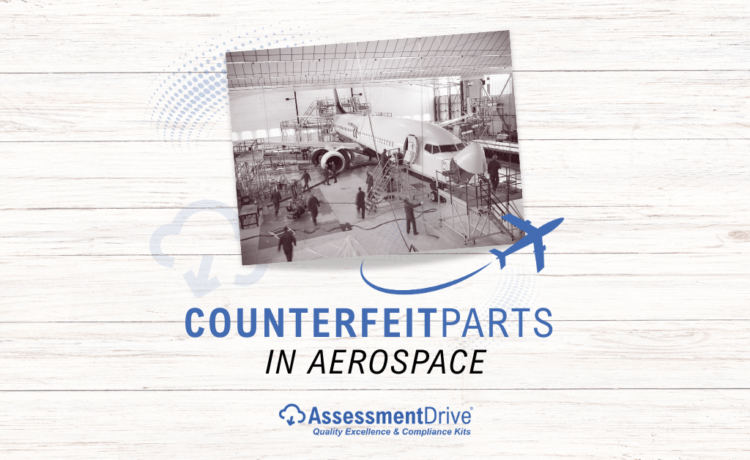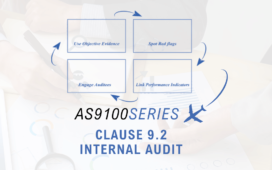Counterfeit parts in aerospace are no longer a theoretical risk—they’re an active and escalating threat that undermines aircraft reliability, operator safety, and national defense capabilities. The FAA estimates that approximately 520,000 counterfeit or unapproved parts enter aircraft annually—roughly 2% of installed components (connectorsupplier.com).
These components, which range from semiconductors and fasteners to composite structures and electronic assemblies, infiltrate both commercial and defense supply chains through unauthorized resellers, gray market distributors, and manipulated documentation.

In the high-stakes environment of aerospace manufacturing, where every component must meet exacting specifications and traceability requirements, the presence of even one unverified part can cause catastrophic failure. The implications aren’t limited to hardware—counterfeit components expose manufacturers, contractors, and OEMs to contract nonconformance, litigation, loss of certification, and permanent brand damage.
How Counterfeit Aerospace Parts Enter the System
Counterfeiters exploit supply chain blind spots created by just-in-time ordering, global outsourcing, and diminishing manufacturing sources. When original component manufacturers (OCMs) stop producing parts, the demand opens a pathway for third-party suppliers to offer “equivalents” without sufficient validation. Often, these parts are re-marked, recycled, relabeled, or re-engineered to pass as authentic, despite failing to meet performance or material standards.
In many cases, the counterfeit part will operate under normal conditions—but aerospace applications rarely operate under normal conditions. High-G environments, thermal stress, and vibration amplify even the smallest inconsistency in metallurgy or solder joint quality. And unlike consumer products, aerospace systems have lives on the line.
What Makes Counterfeit Parts So Dangerous in Aerospace
- Lack of Material Conformance: Counterfeit fasteners or structural parts may use inferior alloys, leading to fatigue or failure.
- False Traceability: Re-marked electronic parts with fake date codes may escape detection during visual inspection.
- Unpredictable Failure Modes: A counterfeit IC chip may function during ground testing but fail mid-mission under flight loads.
- Software-embedded Risks: In avionics or DoD systems, counterfeit boards may carry embedded security risks or compromised firmware.

Regulatory Pressure Is Increasing
Quality standards like AS9100D, IA9100, and DoD DFARS Clause 252.246-7007 demand counterfeit part risk mitigation programs. This includes supplier vetting, part verification protocols, and reporting of nonconforming parts through GIDEP (Government-Industry Data Exchange Program). Noncompliance during an external audit could result in disqualification from future contracts or loss of certification.
How to Detect and Prevent Counterfeit Parts in Aerospace
- Implement a Counterfeit Part Prevention Plan (CPPP)
Integrate risk mitigation at the process level. Document roles, workflows, and escalation procedures. This is now required by AS9100 Clause 8.1.4 and referenced throughout DoD supply chain guidance. - Audit the Supply Chain—Beyond Tier 1 Vendors
Don’t rely on the prime contractor’s reputation alone. Vet Tier 2 and Tier 3 sources. Use QSLDs (Qualified Suppliers List of Distributors) and demand full chain of custody documentation. - Conduct Multi-Layered Inspection
Visual inspection is not enough. Use x-ray imaging, electrical testing, decapsulation, and scanning electron microscopy when needed. Counterfeiters have evolved—your detection methods must evolve faster. - Establish Incoming Inspection SOPs
Standardize your inspection criteria with checklists tied to product families (fasteners, PCBs, hardware, etc.). Include procedures for labeling verification, packaging inspection, and serialization checks. - Train Your Team—Not Just Inspectors
Everyone from procurement to program management should be able to identify red flags: unusually low prices, urgent orders outside contract channels, or parts that arrive without traceable certs. - Enforce Mandatory Reporting
Feed counterfeit discoveries into GIDEP and maintain internal logs for trend analysis. Timely reporting reduces systemic risk across the entire defense industrial base.
Final Word: Prevention Is Cheaper Than Reaction
Every aerospace organization—whether OEM, MRO, or subcontractor—must treat counterfeit parts as a compliance, safety, and mission-readiness issue. With the rise of additive manufacturing, obsolete components, and global procurement, the challenge will only grow.
Investing in a robust counterfeit detection and prevention system is not a cost—it’s a guarantee of operational integrity. The price of ignoring it could be the next program failure, mission abort, or worse—loss of life.
















